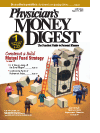Publication
Article
Physician's Money Digest
Pay Attention to Retirement Allocations
Author(s):
Ten years ago, the standardthought process for investorsdeciding how toinvest their retirement accountassets was to invest heavily in stocksto achieve maximum, tax-deferredgrowth in the long term. With themarket's poor performance since2000, many investors are doing justthe opposite—locking in their losses,investing in safe, secure investments,and cutting off any opportunityto recover what they've lost.
New bodies of evidence suggestthat this sort of investor behavior,rather than the markets themselves,is the real reason investors don'tachieve their goals. Investment decisionsshould be part of a comprehensive,overall plan, and if the planis right, it should work out in thelong run. But when it comes to the"rule of thumb"about investingretirement assets heavily in stocks toachieve maximum, tax-deferredgrowth, this is not always the bestoption. You need to consider a fewimportant variables first.
INCOME TAXES
We can assume that stocks willeventually begin providing gains toinvestors again (history indicates thatgains will average about 12% per yearin the long run).When you're young,investing in stocks with tax-deferredassets and compounding at 12% peryear on a tax-deferred basis is a powerfulwealth-building tool. However,as you approach and enter retirement,the considerations changesomewhat. You'll place less of youroverall portfolio in stocks in favor ofsome safer, fixed-income investments.Does it make sense to keepstocks in your tax-deferred accountsat this point?
Early departure:
Surprisingly, it often doesn't. Ifyou assume the stocks will grow at12% per year, that growth insideyour tax-deferred account will ultimatelybe taxed as ordinary incometo you. If you invested in those samestocks in a non-tax-deferred account,you would pay taxes on thegrowth—at much more favorablecapital gains rates. If you happen to die with imbeddedgains in the stocks, you get astepped-up basis and the capitalgain you've achieved is tax-free.
Any losses you experience aredeductible for tax purposes. In mostcases, this much more favorable taxtreatment for stock gains and lossesmeans that at some point in or nearretirement, you should actually beshifting your tax-deferred investmentsinto fixed income, in favor ofmore stock exposure in your taxableinvestment portfolio.
ESTATE TAXES
The federal estate tax exemptionshave increased and will continue toincrease over the next several years,to a point where most Americans arenot going to owe federal estate taxeswhen they die (unless the old lawactually does come back in force in2011, as the law currently provides).But because of the increases in thefederal estate tax exemption, manystates have now adopted their ownestate taxes. And between these statedeath taxes and the federal estate tax(if applicable to you), the tax bite onyour tax-deferred account can bequite substantial if you continue topursue an investment strategy ofmaximum growth with it.
If your taxable estate includestax-deferred assets, recognize thatthe total tax liability on those assetsis likely to be in the neighborhoodof 70% when you die. The assetvalue will be subject to estate tax,which at the maximum federal ratewould be 55%, plus any state estatetaxes. What is left over will be subjectto income taxes. Assuming acombined federal and state incometax rate in the 35% range, you'llhave very little left. So is it reallysuch a great idea to invest this kindof account in investments that willmaximize their value, resulting ingreater estate and income taxes?
NEW DISTRIBUTION RULES
Over the past 2 years, the rulesrelating to required distributionsfrom tax-deferred arrangements havechanged significantly, allowing thedistributions from such accounts tobe stretched out over much longerperiods than ever before. The longerthe money can be kept in a tax deferredaccount, the more powerfulthe wealth-building effect of using anaggressive investment strategy forthose funds becomes.
If your family situation allowsyou the opportunity to stretch yourtax-deferred account distributionsout over many years under the newrules, it's important to remainaggressively invested with your tax deferreddollars.
SOCIAL SECURITY TAX
Social Security benefits are completelytax-free at certain income levels,and at other income levels, youcan pay taxes on up to 85% of yourSocial Security benefits. Keep inmind that tax-deferred account distributionsare included as income,which is used to determine yourSocial Security benefits'level of taxability.In some cases, it doesn't makea difference. But in other cases, byaggressively growing your tax-deferredaccount, all you're doing isincreasing the value to a point whereyour required distributions are largeenough to trigger the maximum taxon your Social Security (in additionto the other income tax detrimentsoutlined above). The impact of yourtax-deferred account investment strategyon your ultimate Social Securitytaxation is an often-overlooked planningpoint that requires close attentionand consideration.
As always, what's right for yourcircumstances and your tax-deferredinvestments is based on your particularsituation and should be part of aplan to address your total financialpicture. Consult with an advisor whois knowledgeable about these subtlenuances to plan for a comfortable,low-tax retirement.
Thomas W. Battermanis the
immediate past president of the
Association of Independent
Trust Companies, a national
organization of more than 100
chartered, well-capitalized, and
insured members who manage their clients'
financial assets during life and after death. For
more information, visit www.aitco.net.
